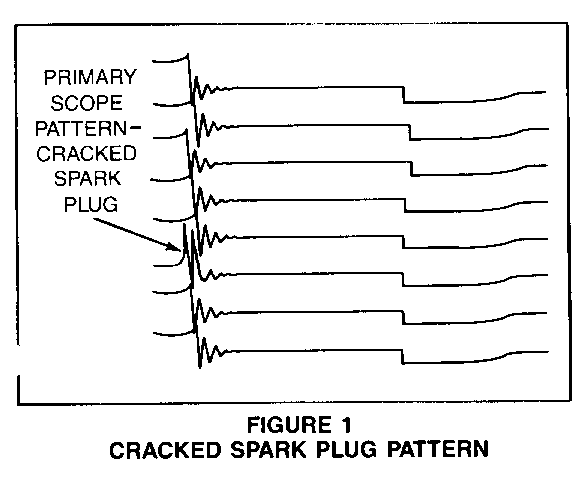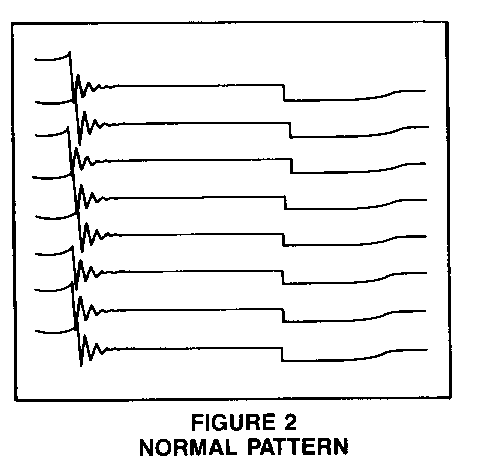LOSS OF POWER UNDER LOAD - CRACKED SPARK PLUG DIAGNOSIS

ENGINE PERFORMANCE DIAGNOSIS HEI IGNITION SYSTEM
Power loss under load, hesitation, shudder and/or medium throttle intake manifold backfire on HEI equipped cars may be caused by an irregularity in the secondary side of the ignition system (cracked spark plug insulator, plug wire leakage, etc.). These symptoms are often mistakenly diagnosed as a DFI or carburetion related condition.
The following procedures may be used in diagnosing this condition:
1. With the engine running, visually inspect the spark plug mounting area of the engine block for a blue are as the spark shorts to ground. This is more visible in a darkened area.
2. With the engine running, apply a water mist using a spray bottle to the plugs, wires, and cap. This procedure may reveal an electrical arc and/or cause the engine to quit.
3. Attach the lead of a standard electrical test light to the tach terminal of the distributor. With the engine running, touch the probe of the test light to the positive terminal of the battery. If the test light maintains a steady brightness level with only minor variations in intensity, the secondary side of the ignition is functioning properly. If the test light does vary in intensity with noticeable difference in brightness, the secondary side of the ignition should be examined further for evidence of the following conditions:
a. Cracked plug b. Plug wire integrity c. Distributor cap integrity d. Rotor integrity
A diagnostic scope displaying the primary pattern may also be used in diagnosing this condition. The firing line will be irregular and higher, and the oscillations from the primary field collapsing will be distorted when a secondary circuit problem exists (refer to Figure 1). When attaching the diagnostic scope, the ISC motor should be disconnected and the air condi- tioning control should be in the "OFF" position to insure constant engine speed.


General Motors bulletins are intended for use by professional technicians, not a "do-it-yourselfer". They are written to inform those technicians of conditions that may occur on some vehicles, or to provide information that could assist in the proper service of a vehicle. Properly trained technicians have the equipment, tools, safety instructions and know-how to do a job properly and safely. If a condition is described, do not assume that the bulletin applies to your vehicle, or that your vehicle will have that condition. See a General Motors dealer servicing your brand of General Motors vehicle for information on whether your vehicle may benefit from the information.
